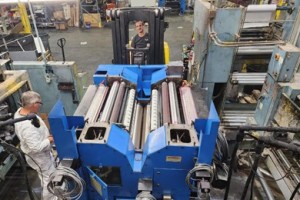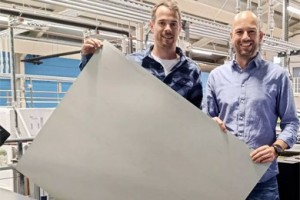Arizona or Alaska, Colorado, Oregon or South Dakota, Wick Communications’ six print sites each have specific workflow requirements.
Now the company is using Agfa’s ProImage NewswayX software to centralise workflow on its Wenatchee, Washington print site, using a range of plug-ins to deliver custom output.
The Wenatchee site started using Newsway in 2004, adding ink optimisation five years later – both of which are available to all sites under the new process. Production workflow from a variety of front-end systems is controlled and managed, with a web browser used to monitor status from both origination and print sites. ICC profiles, PDF and bitmap workflow are supported, with imposition and page pairing. Integration with editorial and press control systems provide a single end-to-end production solution. Ink optimisation helps the Wenatchee plant reduce ink cost by about 20 per cent.
Now existing ProImage workflow is being used to centralise production across five additional print sites, with each having a custom workflow to manage its specific requirements. Plate-ready TIFF files are being sent to spoolers for output to local CTP devices for each output – with load balancing and colour locking supported – and TIFFs for ink presets or CIP 3 files are also sent to individual press control systems as required.
Additional licences at Wenatchee allow outputs at Frontiersman, Wasilla (Alaska), the Sierra Vista Herald in Arizona, the Argus Observer in Ontario, Oregon, the Madison Leader in South Dakota and the Montrose Daily Press in Colorado. The Wenatchee plant also services 80-100 commercial customers, with circulations ranging between 500 to more than 100,000.
Production director Scott Green says one of the major reasons for the centralised system is to increase web security. “Another is the depth of knowledge we will have in our own company for support and thus the ability to help other print sites.”
IT director Don Judd says Wick was facing end-of-life systems issues that would require hardware, operating and production software upgrades at each site. “Centralising these systems on a virtualised Hyper-V environment means significant cost savings as we have a much smaller digital footprint and can use fewer people in fewer hours to keep things running at peak.”
Using Group 4 one-bit TIFFs allows to centralisation of systems in more remote and rural areas, where bandwidth availability is not available.
The HTML5-based software can be accessed from any browser. In this case it is hosted on-site, but can also be installed on a hosted AWS cloud.
Pictured: prepress manager Russ Dixon
















Comments